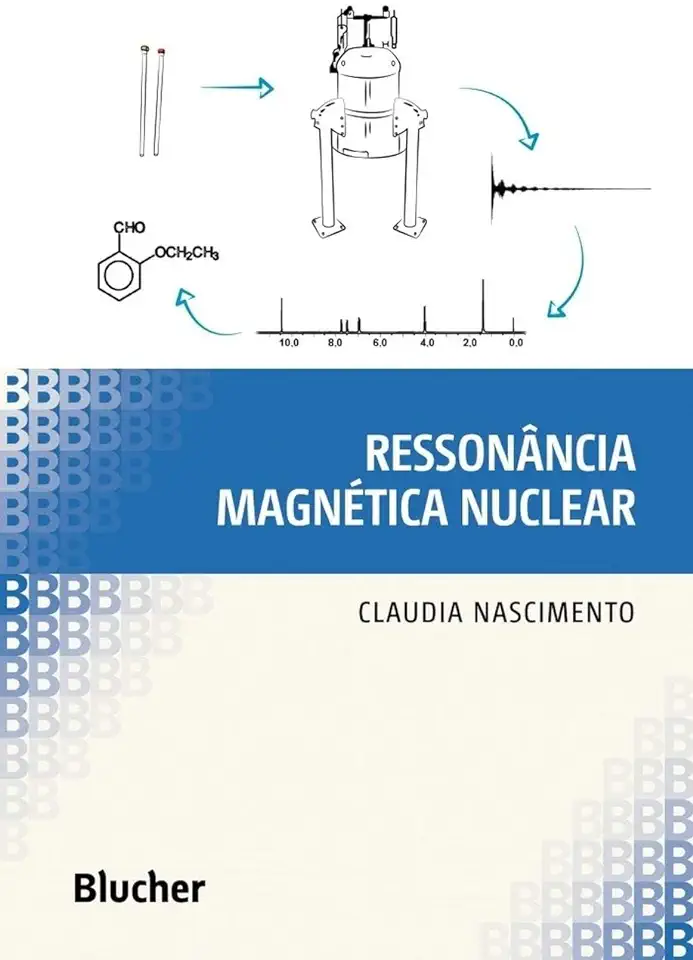
Nuclear Magnetic Resonance - Claudia Nascimento
Nuclear Magnetic Resonance: A Comprehensive Guide
Introduction
Nuclear Magnetic Resonance (NMR) is a powerful analytical tool used to study the structure and dynamics of molecules. It is based on the principle that certain atomic nuclei, such as 1H, 13C, and 15N, have a magnetic moment and can be aligned in a magnetic field. When these nuclei are exposed to a radiofrequency pulse, they absorb energy and flip their spins. The amount of energy absorbed is characteristic of the nucleus and its environment, so NMR can be used to identify and quantify different atoms and groups of atoms within a molecule.
Basic Principles of NMR
The basic principles of NMR are relatively simple. A sample is placed in a strong magnetic field, and a radiofrequency pulse is applied. This causes the nuclei in the sample to align with the magnetic field and precess around it at a characteristic frequency. The frequency of precession is proportional to the strength of the magnetic field and the magnetic moment of the nucleus.
The NMR spectrum of a compound is a plot of the intensity of the NMR signal versus the frequency of the radiofrequency pulse. Each peak in the spectrum corresponds to a different nucleus in the molecule. The chemical shift of a peak is a measure of the electron density around the nucleus, and it can be used to identify different types of atoms and groups of atoms.
Applications of NMR
NMR is a versatile technique that has a wide range of applications in chemistry, biology, and medicine. Some of the most common applications of NMR include:
- Structural determination of organic compounds. NMR can be used to determine the structure of organic compounds by identifying the different atoms and groups of atoms within the molecule.
- Protein structure determination. NMR can be used to determine the structure of proteins by identifying the different amino acids and their interactions with each other.
- Metabolism studies. NMR can be used to study the metabolism of compounds by following the changes in the NMR spectrum over time.
- Drug discovery. NMR can be used to identify and characterize new drugs by studying their interactions with proteins and other molecules.
Advantages and Disadvantages of NMR
NMR is a powerful analytical tool, but it also has some limitations. Some of the advantages of NMR include:
- Non-destructive. NMR is a non-destructive technique, so it can be used to study samples without damaging them.
- High resolution. NMR can provide high-resolution information about the structure and dynamics of molecules.
- Versatile. NMR can be used to study a wide range of compounds, from small molecules to large proteins.
Some of the disadvantages of NMR include:
- Expensive. NMR spectrometers are expensive to purchase and maintain.
- Time-consuming. NMR experiments can be time-consuming, especially for large molecules.
- Requires specialized expertise. NMR is a specialized technique that requires specialized expertise to interpret the results.
Conclusion
NMR is a powerful analytical tool that has a wide range of applications in chemistry, biology, and medicine. It is a non-destructive, high-resolution, and versatile technique that can be used to study a wide range of compounds. However, NMR is also expensive, time-consuming, and requires specialized expertise.
Call to Action
If you are interested in learning more about NMR, there are a number of resources available. You can find books, articles, and tutorials online, or you can take a course at a local university or college. If you are interested in purchasing an NMR spectrometer, there are a number of manufacturers that offer a variety of models to choose from.